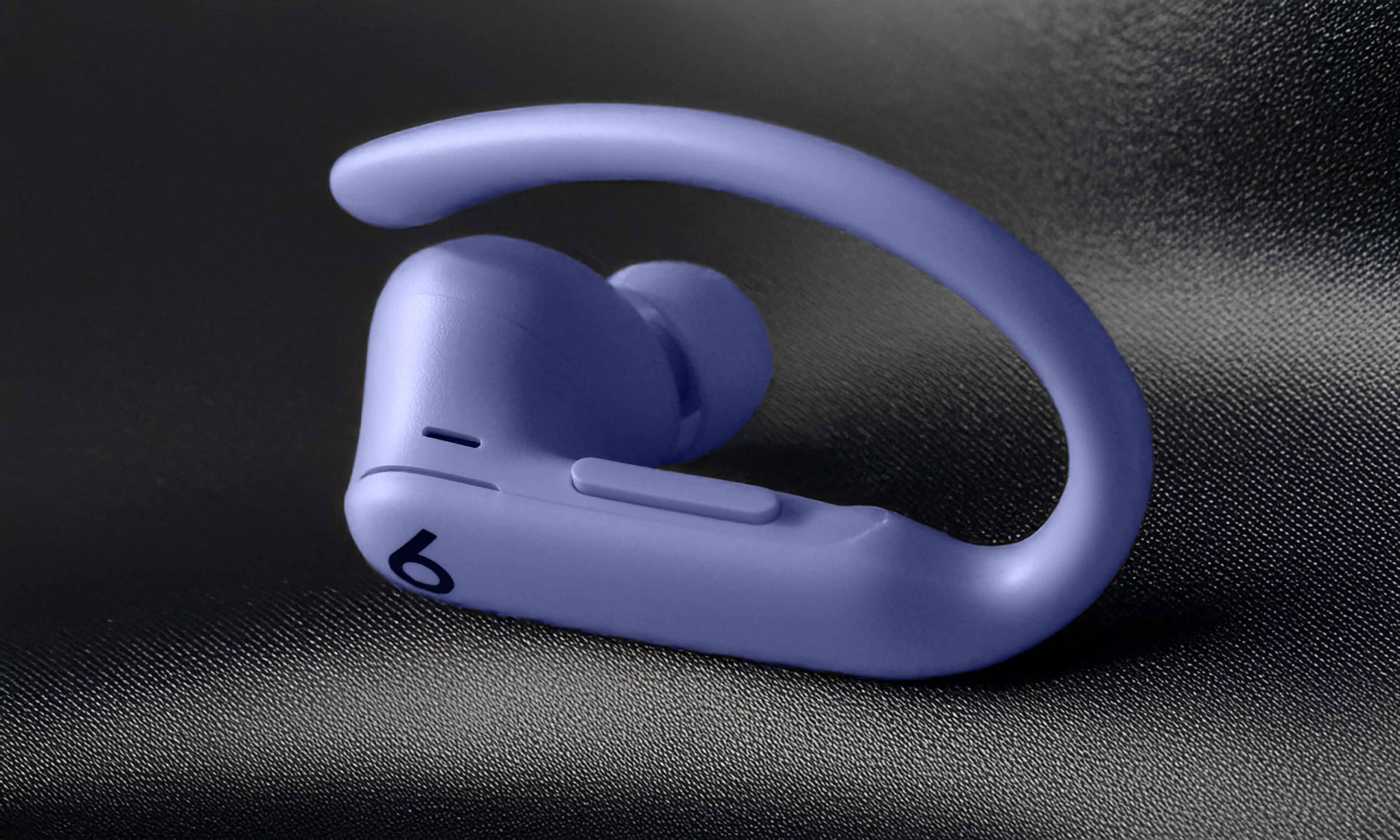What Is an eSIM and How Does an eSIM Work? – All You Need to Know
When you purchase through links on my site, I may earn an affiliate commission. Here’s how it works.
Table of Contents Show
If you've been following the latest in smartphones and smart devices, you've probably come across the term eSIM.
But what exactly is it, and why is it becoming a staple in our tech ecosystem?
That’s what we’ll answer today.
Let's dive deeper into how eSIMs work, their advantages as well as disadvantages, and some considerations to keep in mind.
What is eSIM?
At its core, an eSIM (which stands for Embedded Subscriber Identity Module) is a minuscule digital chip that lives right inside your device.
Unlike a SIM card, it's not something you can touch or see easily because it's soldered directly onto your device's motherboard.
Thus, it's changing the way we connect to cellular networks, offering a level of flexibility and efficiency that traditional plastic SIM cards can't match.
The Technology Behind eSIM
What makes eSIM technology stand out is its ability to be reprogrammed remotely by mobile network operators.
Imagine being able to switch carriers or jump onto a different plan without having to physically swap out SIM cards.
That's the kind of convenience we're talking about.
Thanks to the standards established by the International Telecommunication Union (ITU), eSIMs prioritize secure global interoperability.
How eSIM Works: Activation and Operation
Activating an eSIM is mostly as easy as scanning a QR code from your carrier or downloading their app.
This kicks off the process where your eSIM downloads a profile with all the info needed to get you connected to the network – kind of like how traditional SIM cards work but without the hassle of the physical card.
The real beauty of eSIM technology? It lets you store multiple profiles at once.
So, whether you're a globe-trotter needing local carriers or juggling personal and business numbers on one device, eSIM has got you covered.
Security and Management
With any tech that handles our data and keeps us connected, security is key.
eSIMs come equipped with sophisticated encryption and authentication measures to keep your info safe and your connections secure.
The GSMA (Global System for Mobile Communications Association) has laid down the law here, ensuring eSIMs meet strict security standards.
Plus, managing your eSIM profiles is done through a secure platform, usually provided by your carrier, which enhances overall privacy protection.
Advantages of eSIM
Now, let's discuss some of the advantages of eSIMs.
1. Enhanced Durability and Reliability
As mentioned earlier, eSIMs, unlike regular SIM cards, are actually built right into devices.
One key benefit of this embedded design is how tough it is against environmental factors.
Physical SIM cards, being out in the open and removable, can wear down from everyday use, exposure to the elements, and just degrading over time.
This can cause connection problems, leading to the hassle of replacing them.
In contrast, eSIMs are snug inside the device, protected from direct contact and environmental harm, which really boosts their durability and helps the device last longer overall.
It’s also nearly impossible now to lose the eSIM compared to a physical SIM card.
2. Simplified Network Switching
One great thing about eSIM tech is how easy it makes switching networks.
Instead of dealing with ordering a new SIM card, waiting for it, and going through the hassle of physically replacing it, you can switch carriers effortlessly by just tapping your device's screen.
This could really come in handy for folks who travel a lot and need to hop on local networks in different countries, or for those looking to take advantage of promotional offers from various carriers without dealing with the whole SIM card shuffle.
3. No Need for a Physical Slot
By ditching the physical SIM tray, we actually also save quite a bit of space.
This extra room gives designers more freedom to arrange internal parts, making way for thinner and lighter devices.
Or, they could use the space for new features like bigger batteries, better cooling systems, or extra sensors to amp up the device's capabilities.
4. Increased Security
One major security perk of eSIMs is their theft resilience.
Traditional SIM cards can be easily taken out and put into another device, but eSIMs are built into the hardware.
If your device gets stolen, the eSIM stays locked inside, making it tough for thieves to use your cellular service or access your data.
Plus, no risk of losing or damaging a physical SIM card with eSIMs onboard.
Moreover, handling eSIMs can be done remotely by the carrier or service provider, making it easier to secure the device if it's lost or stolen.
They can wipe or disable the eSIM from afar, making the device useless to unauthorized users.
This level of control is a big improvement from traditional SIM cards that would need physical replacement or manual deactivation, which might not be as quick.
Another major security concern that eSIM technology tackles is SIM swapping attacks. In these situations, bad actors take advantage of flaws in two-factor authentication and verification processes.
They trick telecom providers into transferring a victim's phone number to a SIM card in the criminal's hands.
This sneaky move gives unauthorized access to the victim's messages and maybe even their accounts and sensitive info.
But with eSIMs, you don't need to physically swap cards. You and your carrier can manage it all with strong authentication protocols. That means the risk of SIM swapping attacks goes down.
Last but not least, eSIM technology also incorporates advanced encryption and authentication measures that protect your identity and data way better than regular SIM cards.
These upgraded security features make eSIMs a tough shield against cyber threats, ensuring your personal info like contacts, messages, and credentials stay safe and sound.
5. International Compatibility
With eSIMs, users can store multiple network profiles on a single device.
For starters, the ability to store multiple network profiles means that you can have your home number and several international numbers all on the same device.
This is a game-changer for international travelers. Gone are the days of juggling multiple SIM cards or devices to stay connected abroad.
With an eSIM, you can switch to a local network profile of the country you're visiting, potentially saving you from hefty roaming charges.
This seamless transition not only simplifies the process but also ensures you're always connected with the best available network, wherever you are in the world.
Business users, especially the frequent travelers or those managing international teams, can really benefit from eSIM technology.
Being able to switch between profiles without the hassle of changing SIM cards lets them seamlessly transition from personal to business numbers or between different country profiles without skipping a beat.
This feature ensures they stay connected and accessible at all times, which is essential for keeping business running smoothly.
6. Support for Multiple Devices
Imagine your smartwatch keeping you in the loop with calls and texts, streaming your workout playlist, or even letting you send that urgent email, even when you leave your phone behind.
That's the kind of freedom eSIM tech is bringing to wearables and tablets. It's like giving each of your devices its own direct line to the digital world, no phone tethering required.
For those who are always on the move or trying to minimize what they carry, this is a game-changer.
One Plan to Rule Them All
Now, managing separate data plans for every device sounds like a headache, right? eSIMs are here to streamline that mess.
With the ability to share one data plan across your smartphone, tablet, and wearable, things get a lot simpler and potentially cheaper.
No more juggling multiple contracts or worrying about which device is eating up more data.
7. Environmental Benefits
Switching to eSIM technology brings big environmental benefits, paving the way to shrink our digital footprint.
By moving from physical SIM cards to embedded eSIMs, we're taking a step toward a greener, more sustainable future.
Here's how:
Cutting Down on Plastic
Traditional SIM cards and their packaging are like double trouble for the environment – all that plastic adds up. But eSIMs?
They're built right into your device. No extra plastic, no packaging, just a cleaner, greener way to stay connected.
We're talking about a significant reduction in plastic waste, which is huge considering how much of this stuff ends up in landfills or, worse, the ocean.
Saving Resources
Think about the whole lifecycle of a traditional SIM card – there's the manufacturing, the packaging, and don't forget the shipping.
All of that eats up resources and energy. eSIMs, though, streamline the process.
They're digital, so we're saving on paper, plastic, and all the fuel it takes to get those cards from A to B across the globe.
Decreasing Electronic Waste (E-waste)
Electronic waste is a growing problem. It's not just about the space it takes up; it's the nasty chemicals and metals that can leech into the environment.
Since eSIMs are part of your device and don't need to be swapped out, they're actually helping us chip away at the e-waste issue.
Plus, fewer devices might end up being tossed because they're more durable without those SIM card slots.
Making Devices Last Longer
Without the need for a physical slot for SIM cards, devices can be designed to be more robust, maybe even more water-resistant.
This could mean our phones last longer, and we're not contributing to the cycle of upgrade, discard, repeat as often. It's a small change with potentially big ripple effects for reducing waste.
Promoting Green Initiatives
Switching to eSIMs isn't just about cutting down on plastic or e-waste – it's part of a bigger picture.
It's about the tech world stepping up and saying, "Hey, we can do things differently."
It's about innovation that doesn't just look forward but also looks out for our planet.
And let's be real, in the face of climate change, every bit helps.
Disadvantages of eSIM
Alright, let's continue with some of the disadvantages of eSIMs.
1. Loss of Flexibility
As mentioned before, instead of physically swapping cards, you're essentially reprogramming your device to switch carriers.
Sounds futuristic, but it's not all smooth sailing.
One thing to note is that switching eSIM profiles can differ depending on the carrier.
Sometimes you might need internet access or their specific apps. This could be tricky if you need instant network access but can't get online easily.
Also, even though lots of carriers are getting on board with eSIMs globally, not all of them have switched yet. This might mean fewer choices for users in some areas or countries.
2. Technical Challenges
Setting up an eSIM might seem a bit daunting for those not too tech-savvy.
Unlike the simple physical SIM card insertion, activating an eSIM involves delving into settings and navigating carrier-specific steps.
This added complexity might make some users think twice before freely upgrading or changing carriers as they did before.
3. Data Privacy and Security
Here's where things get a bit tricky with eSIMs. Because they're soldered right into your device, there's no quick 'eject' button you can hit to vanish from the network.
This means, in theory, your movements could be tracked more consistently if someone wanted to.
Now, for most of us, this might not be a daily concern, but it's a significant shift in how we control our connectivity and, by extension, our digital footprint.
4. Resale and Device Sharing
Since eSIMs are built right into your device, you can't just hand over a piece of plastic to transfer service.
Instead, you've got to dive into the settings and navigate through what feels like a digital maze to properly transfer or manage these eSIM profiles.
For anyone looking to sell their device, this adds an extra step to the process.
You've got to ensure the eSIM is either deregistered or transferred correctly, which might involve a call or two to your carrier.
For those moments when a friend needs to borrow a phone, the simplicity of swapping SIM cards is sorely missed.
Now, you're looking at either adding their eSIM profile to the device or leaving yours active, neither of which is as straightforward as the old SIM swap.
5. Emergency Situations
If your phone's battery starts acting up or the device gets damaged, a quick fix is to just pop out the SIM card and put it into another compatible phone.
It's easy and fast, keeping you connected to your network so you can keep making calls, texting, or using data.
This is super handy, especially in emergencies when you need immediate access to communication.
On the flip side, eSIM technology has great perks like better security and convenience, but it can get tricky during emergencies.
Since the eSIM is stuck in your device, you can't just pop it into another phone easily.
If your main device with the eSIM conks out, you'll have to contact your carrier to activate your number on a new device or transfer the eSIM profile.
Depending on how quick your carrier is and the situation, this process might not be instant and could be more of a hassle than swapping a physical SIM card.
The Future of eSIM Technology
As we look ahead, eSIM technology is gearing up to be more than just a handy replacement for physical SIM cards – it's on track to become a vital part of the telecom world.
According to a report from The National News, we're expecting over six billion eSIM-enabled devices to hit the market by 2026, showing how quickly this tech is catching on.
One of the most exciting aspects of eSIM technology is how it could make devices universally compatible.
Picture this: your device connecting to any network worldwide hassle-free, no more swapping SIM cards or compatibility headaches.
This dream might just come true as eSIM standards progress, aiming for a smoother global telecom system.
These advancements would really streamline mobile connections, making it simpler for folks to handle service plans and stay connected, no matter where they are.
Further Simplification of Mobile Connectivity
The essence of eSIM technology lies in simplifying mobile connectivity.
Although eSIMs may feel complicated now with different carrier support and activation methods, ongoing improvements are working to make things smoother.
Looking ahead, we might see a more user-friendly way to handle eSIM profiles, like through standard platforms or universal apps that make switching carriers or plans easier.
Also, with eSIM technology being used in more devices like IoT gadgets and wearables, we might see a future where connectivity goes beyond just smartphones.
Imagine a world where devices communicate effortlessly with one another and with cellular networks, making our digital experience even better.
Potential Challenges and Considerations
The future of eSIM tech looks promising, but let's not forget about the challenges ahead.
Regulations and setting standards will be key in shaping the eSIM world.
Making sure consumers are safe and secure in this digital SIM world will need everyone to work together.
Moreover, to make mobile connectivity simpler and universally compatible, carriers need to widely adopt and support eSIM technology.
While the industry works through these challenges, the key is to ensure users worldwide have a smooth and secure connectivity experience.
Wrapping Up
And voilà, we've cracked the code on eSIM technology together! From diving into what an eSIM is all about to weighing its pros and cons, we've covered it all.
Now, I'm turning the spotlight over to you. Have you made the switch to an eSIM yet? Or perhaps you've encountered a unique scenario where eSIM technology came to your rescue? Your experiences and insights are gold, and I'm all ears to hear from you.
Feel free to share your eSIM stories in the comments below or shoot them my way on social media. Let's keep this tech talk alive.
Oh, and if you haven't jumped on board with my newsletter yet, consider this your personal invite. It's packed with the slickest tech tips, in-depth reviews, and the freshest news from the tech world that you won't want to miss.
See you on the next one. A huge thank you for sticking around!
FAQ
-
An eSIM (Embedded Subscriber Identity Module) is a digital SIM that allows you to activate a cellular plan from your carrier without the need for a physical nano-SIM.
It's embedded directly into your device, making switching carriers or plans much smoother.
-
An eSIM works by storing all information required to authenticate your device with your mobile operator on a small chip inside your smartphone, tablet, or wearable.
You can add or remove cellular plans digitally, often through the device's settings or a specific app provided by the carrier.
-
Not all devices are eSIM compatible. The technology is relatively new, so it's primarily found in newer models of smartphones, tablets, and wearables.
Always check your device's specifications or with your manufacturer to confirm eSIM support.
-
Yes, one of the significant advantages of an eSIM is its ability to easily switch between carriers, which can include international operators.
However, it's essential to check with your home carrier about international plans or with local carriers in the destination country about eSIM compatibility.
-
Yes, most eSIM-capable devices allow you to store multiple profiles on your eSIM, though you might only be able to use one at a time.
This feature is perfect for travelers, people who want separate business and personal numbers, or those looking to take advantage of different data plans.
-
Absolutely! eSIM technology offers the same level of security as traditional SIM cards.
Additionally, because there's no physical SIM to lose or swap, some might argue eSIMs provide an enhanced level of security against theft or loss.
-
Setting up your eSIM can vary slightly depending on your device and carrier.
Generally, it involves scanning a QR code provided by your carrier or using a carrier's app to download the eSIM profile directly to your device.
Instructions are usually provided by your carrier once you sign up for an eSIM plan.
-
Yes, you can switch back to using a physical SIM card anytime, provided your device has a SIM card slot.
You'll need to contact your carrier to transfer your service back to a physical SIM card.
-
If you're upgrading or changing to another eSIM-compatible device, you can transfer your eSIM profile to your new device.
The process for this will vary by carrier, so it's best to contact them directly for instructions.
-
While eSIM technology offers numerous benefits, there are a few considerations.
Not all carriers support eSIM yet, and those traveling to remote areas may find limited eSIM support.
However, as eSIM technology becomes more widespread, these issues are quickly diminishing.
MOST POPULAR
LATEST ARTICLES




















